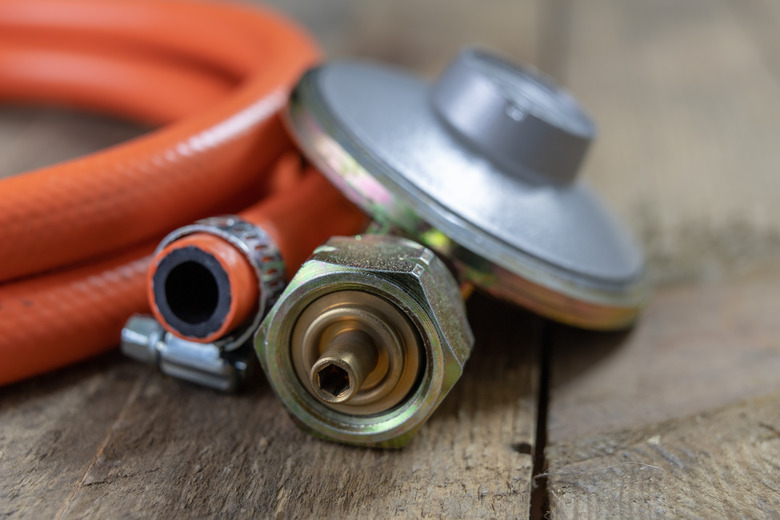How A Natural Gas Regulator Works
When you have gas heat or appliances, you will also have gas regulators. Propane regulators and natural gas regulators are not interchangeable, though they both operate in the same fashion. A natural gas regulator is comprised of five components: set screw, spring, rod, diaphragm and valve.
How a Gas Regulator Works
How a Gas Regulator Works
Gas regulators can be found in everything from an anesthesia machine to a car engine and are available in a wide range of settings and sizes. Regardless of the end use of a natural gas regulator, they all have the same basic operation.
A set spring is attached to a rod that runs down from the set screw, through the diaphragm and ends up in the valve. The easiest way to understand this is to imagine an umbrella. When opened, there is tension from a spring that is locked into place when in use. The opened covering of the umbrella is similar to a diaphragm in a gas regulator. When it is opened, it keeps the water from flowing onto you. Turn that upside down, and you essentially have the function of a gas regulator.
Pressure Regulator Operation
Pressure Regulator Operation
A pressure regulator works through the same principles of any natural gas regulator. When pressurized natural gas enters the regulator, it will push up against the diaphragm, bringing tension to the spring. The diaphragm will move upward as far as the tension of the spring will allow it to go.
Once it is at its maximum closure, the diaphragm will regulate until the source of natural gas pressure – in this case, the gas itself – stops flowing. The valve at the bottom of the rod that is attached to the diaphragm is designed to close off the flow of gas once in the closed position.
Adjusting Natural Gas Pressure Regulators
Adjusting Natural Gas Pressure Regulators
Adjustment to your natural gas pressure regulator should be left to a licensed and bonded professional. Gas piping systems are under a great deal of pressure, and if there is a problem with your regulator, you could have explosive consequences. To adjust the regulator, a professional will need to tighten or loosen the set screw. This will relax or tighten the pressure that the spring will allow.
Propane and Natural Gas Regulators
Propane and Natural Gas Regulators
While they operate under similar valve systems, there are some propane regulators that cannot be used with natural gas and others that cannot be used with propane. Unless you are certain that your valve will suffice for your purpose, do not use them interchangeably. If you are unsure about your gas regulator, the best thing to do is to have a professional assess it.
What Are Two-Stage Regulators?
What Are Two-Stage Regulators?
The best example of a two- or dual-stage regulator is what you see on an oxygen tank. True to the name, a two-stage regulator has two regulators in the system. The first is nonadjustable and will control a set pressure to enter the second valve. That second valve can be adjusted and will regulate the amount of gas that can leave the system at one time.
Natural Gas Regulators at Home
Natural Gas Regulators at Home
In the home, your gas regulator typically works in a two-stage system. There is a regulator that connects your home lines to the gas lines and is completely fixed by the manufacturer. The gas lines in your house are therefore always under pressure.
The second stage of the system would be you adjusting the temperature of whatever is connected to your gas line. For example, turning the heat up in your house allows more gas to flow through your heating system, and turning the gas off or down will close off that section.
